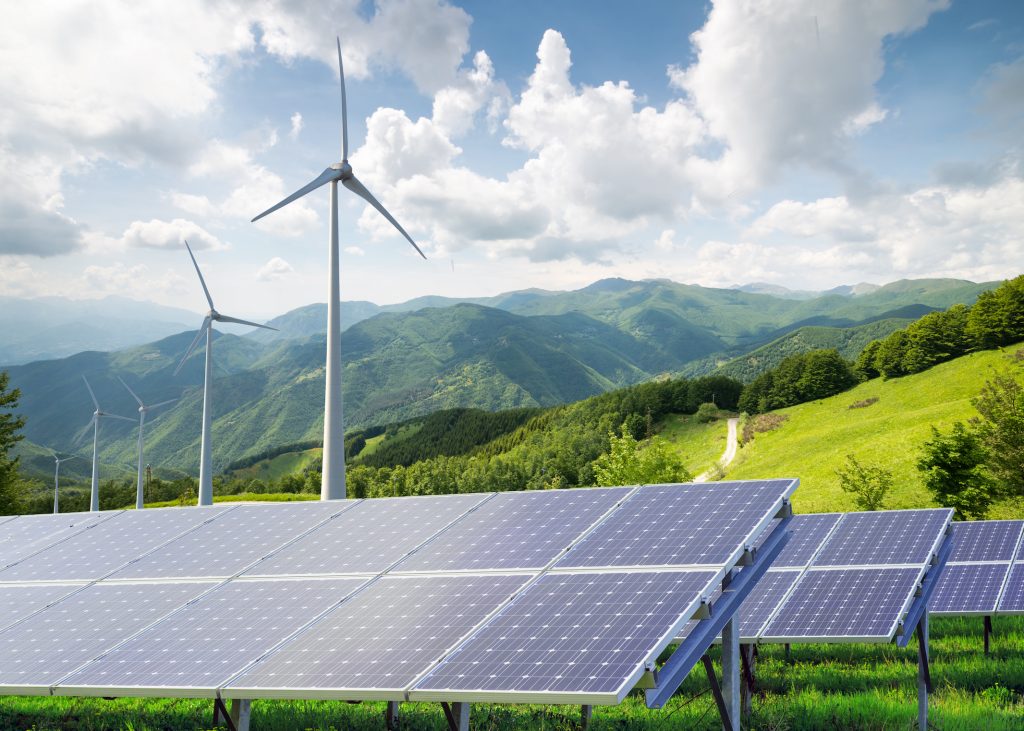How the Utilities Industry is Building a Sustainable Future – Cisco Blogs

The energy and utilities industries play a significant role in carbon emissions. In the United States, 25% of greenhouse gas (GHG) emissions come from electricity generation. This is not surprising, with coal and natural gas representing about 60% of electrical supply in the U.S. What may come as a surprise is that the utilities industry is leading when it comes to adopting sustainable practices.
At present, more than 80% of U.S. investor-owned utilities have committed to reduce carbon emissions. Around three quarters of customer accounts were served by an entity with a 100% carbon reduction target—either an individual utility or a utility owned by a parent company with a 100% target. In 2022, we expect more utilities will likely get onboard and firm up commitments and strategies. The move is driven by environmental, social, and governance (ESG) goals, as well as consumer support, opportunities for value creation, evolving state clean energy mandates, and potential federal legislation.
Three primary factors are driving sustainability for the utilities industry:
- Expanding government regulations: The U.S. Federal Clean Air Act and similar legislation in other jurisdictions mandates the industry to reduce carbon emissions and meet sustainability targets
- Surging consumer and shareholder demand: Eco-minded consumers and shareholders – including large institutional investors – continue to put pressure on companies to focus on sustainable practices and renewable energy sources like wind and solar
- Diminishing cost of renewable energy: As with any expanding technology market, the cost of generating renewable energy is going down over time.
Energy Transition for Sustainability
As noted, the utilities industry is shifting to more sustainable practices. Combined, these forces will contribute to local, national, and global GHG emissions targets. Here’s how:
First, having more renewable energy sources can increase demand for green energy. As more wind turbines, solar arrays, and other renewable energy installations are built, they generate a larger proportion of energy on the grid. When utilities companies connect renewable energy sources, they can offer consumers a choice of using traditional or renewable energy on their utility bills. As more eco-invested consumers choose green power, it increases the demand for renewable energy sources. For example, the UK recorded its greenest day ever on April 5, 2021, with electricity usage and associated carbon pollution levels the lowest ever recorded for the power grid.
Second, the ongoing cost to operate renewable energy installations is becoming lower than traditional power plants. Once the initial capital cost of a renewable energy installation is covered, the cost to continue operations is lower than with traditional hydrocarbon sources. Raw source materials needed to generate power, i.e., sun, wind, or water, are basically free. By 2025, it is estimated that the cost of energy from solar power, wind power, and energy storage will be competitive with traditional power-generation technologies in more geographies of the world.
As renewable energy becomes less expensive to generate, it will increasingly become the source of choice for utility companies. It addresses all three of the driving forces listed above: it satisfies government regulations, consumer demand, and the cost of doing business.
Cisco Enables our Utility Customers’ Sustainability Goals
Cisco’s commitment to sustainability is in line with utility companies that want to partner with vendors with well-defined environmental initiatives. Cisco has a history of contributing to sustainability initiatives like power efficiencies, supply chain sustainability, environmental monitoring and compliance, and data transport for sustainability projects. Cisco’s own sustainability journey is documented here and here.
Experience in Energy Transition
Cisco has worked with energy customers to provide secure communication infrastructure for solar deployments, wind farms, and other new energy initiatives. Those experiences are being documented in reference architectures and case studies. As the energy transition gains momentum this pool of experience continues to grow, with initiatives like EV charging networks, energy storage, and carbon dioxide storage.
Here are a few examples of recent customer projects:
Efficient Power Usage
Cisco has deployed smart building and campus solutions that monitor and optimize power usage. Many of these solutions were first deployed at Cisco to showcase our own sustainability accomplishments and direction. The solutions in this practice are applicable across all industries and several of them can be applied in heavy industry facilities:
Cisco Smart Building Solutions
Cisco Portfolio Explorer for Smart Buildings
Sustainable Supply Chain
To influence a sustainable supply chain, Cisco has intentionally changed its approach. We’ve begun shifting 100% of new products to circular design principles, reducing the use of virgin plastic by 20%, and reducing packaging foam use by 75%. Cisco often works with customers to share what they are learning in these initiatives to make similar transitions easier for customers. These initiatives span both enterprise and industrial practices:
Cisco’s Sustainable Supply Chain
Green and Digital Transitions in Europe
Digitization – Environmental Monitoring and Control
Energy companies must measure and control emissions to ensure they are meeting their corporate and regulatory goals. Cisco has comprehensive experience in managing communication and data flow from industrial sensors and systems. Cisco partners like Emerson and Honeywell both have specific emissions monitoring solutions, and we’ve helped them achieve their goals.
Honeywell Emissions Monitoring
Summary/Conclusion
As utilities develop new, sustainable ways of doing business, Cisco can help them accelerate the anticipated benefits. The precision of a digital operation drives out waste. New sustainable ventures become more effective with the visibility, manageability, and security of a Cisco infrastructure.
Cisco Sustainable IoT for Renewable Energy webinar recording
Leading the IT Industry in Combating Climate Change – Cisco Achieves 100% Renewable Energy in U.S
Share:

